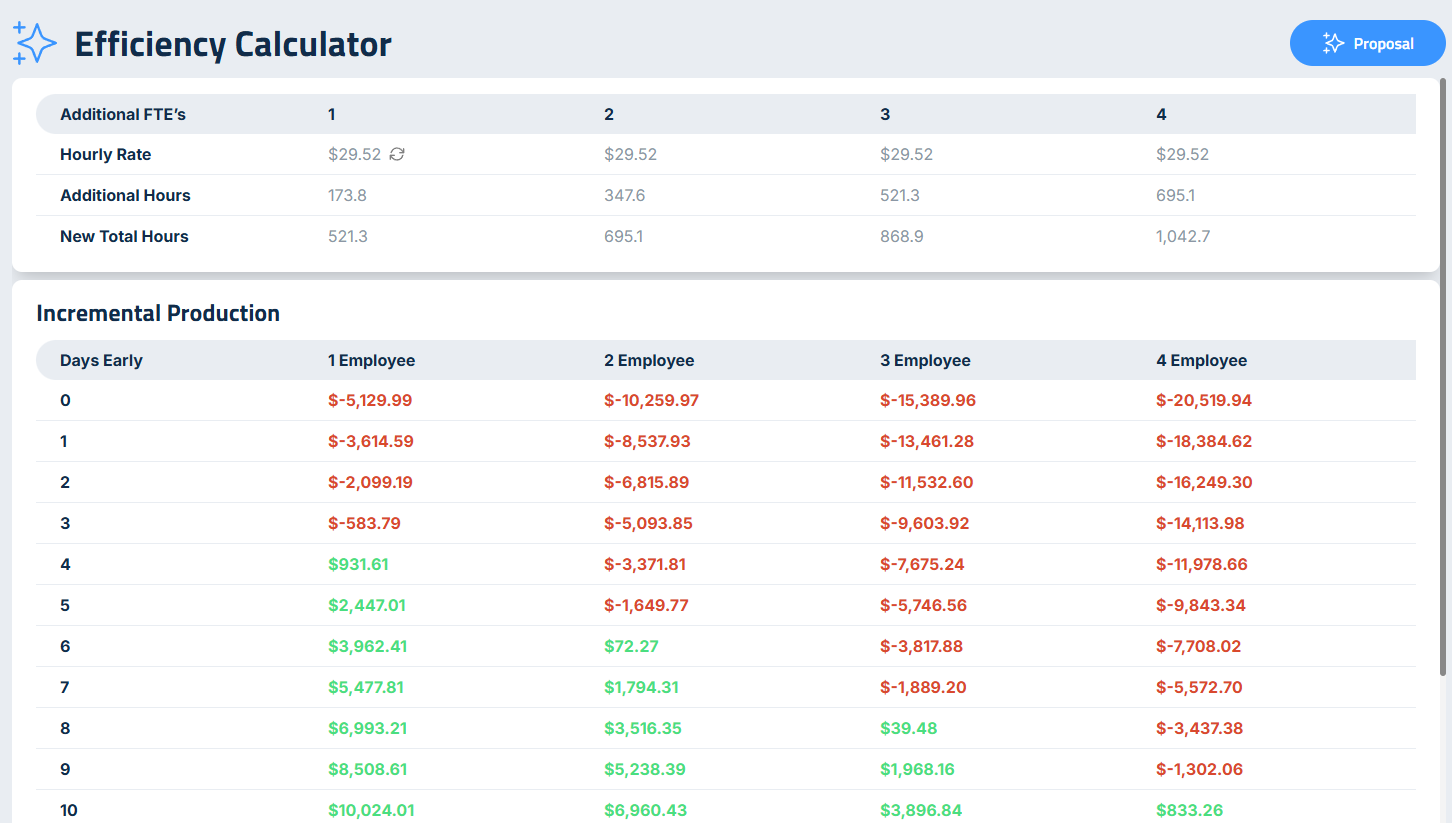Efficiency Calculator: A Smarter Way to Plan Crew Size and Profitability
The Efficiency Calculator in Elevation Advisor is a strategic planning tool designed to help you determine whether adding workers to a project will actually improve your bottom line. Instead of guessing, it gives you a clear financial comparison between the cost of extra labor and the potential revenue gained by finishing early and starting your next job sooner.
This tool is especially useful when you're facing tight deadlines, considering overtime, or evaluating whether pulling crew members from other jobs could accelerate progress. It’s built to support real-world decisions, like whether hiring temporary labor is worth it, or if early completion will unlock new revenue opportunities.
When to Use It
The Efficiency Calculator is ideal in scenarios such as:
- Meeting a client-imposed deadline with temporary labor
- Deciding if overtime costs are justified
- Reassigning crew members to speed up a job
- Evaluating the financial impact of finishing early
- Freeing up your crew for a high-priority follow-up project
How It Works
Elevation Advisor automatically pulls in key data from your proposal and Profit Genie setup:
- PMM (Production Minus Materials) and daily work hours
- Crew Size and project duration
- Hourly labor rate, based on your team average (but adjustable for new hires)
To access the calculator, open any proposal and go to the Markup screen. Click the Efficiency Calculator button in the top-left corner. Once opened, you can confirm or adjust the hourly rate for the additional workers you're modeling.
The calculator will then display:
- Additional FTEs – Number of full-time employees you're considering adding
- Additional Hours – Total labor hours those workers would contribute
- New Total Hours – Updated crew hours required to complete the project
Interpreting the Results

At the heart of the tool is the Incremental Production Table, which simulates how profitability changes when:
- You add 1 to 4 additional workers
- The project finishes 0 to 20 days earlier than originally scheduled
Each cell in the table shows the net financial outcome, either a profit or a loss, based on the cost of added labor and the value of finishing early.
🟢 Green = Net profit (you finished early enough to offset the added labor cost)
🔴 Red = Net loss (you didn’t finish early enough to justify the added cost)
Example:
A 50-day project with a two-person crew adds one worker.
- Finishing 2 days early results in a –$2,099.19 loss
- Finishing 5 days early yields a +$2,447.01 profit
The break-even point is around 3–4 days early
Key Considerations
Adding labor can be a smart move, but only under the right conditions. It’s most effective when:
- Your crew can realistically finish significantly earlier
- A follow-up project is ready to begin immediately
- A client deadline, penalty, or bonus makes early delivery worthwhile
- Weather or seasonality limits your working window
However, the more workers you add, the more days early you must finish to break even. This reflects the principle of diminishing returns. The calculator assumes each added worker is equally productive, but in reality, new hires may require onboarding, supervision, or training, none of which are factored into the model.
Final Thoughts
Use the Efficiency Calculator as a guide, not a guarantee. Be realistic about how much time you can save and how well your crew can perform with added staff. Track progress closely to ensure you’re on pace to meet the break-even threshold.
Once you’ve made a decision, update your schedule in the Smart Calendar to reflect any changes in crew size or timeline. The calculator is a powerful tool, but its value depends on disciplined execution and a clear understanding of your project pipeline.
Updated on: 10/13/2025
Thank you!